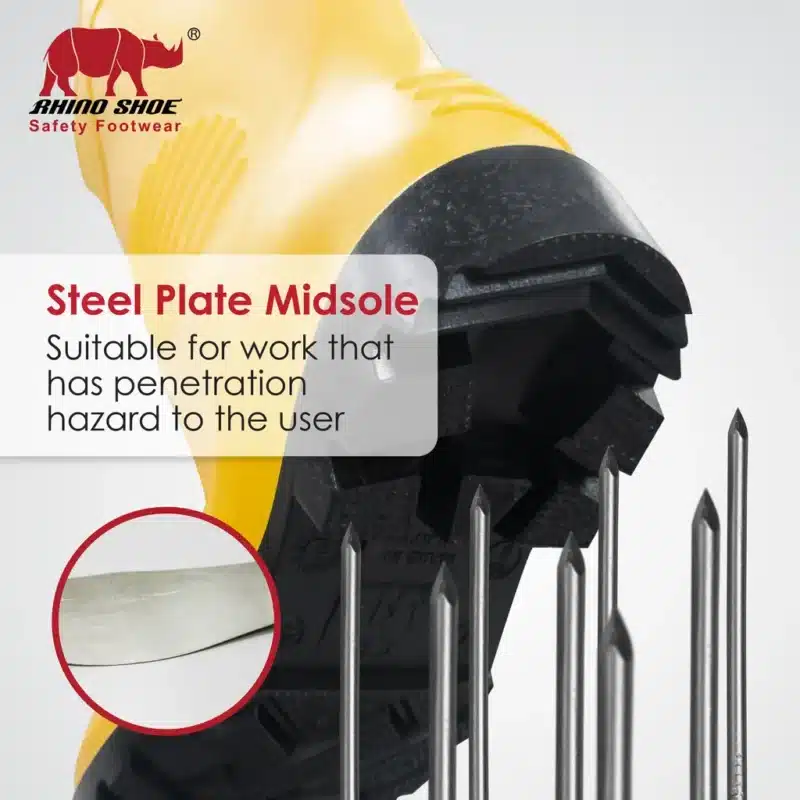Selecting the right safety boots is not just about compliance—it’s about ensuring comfort, durability, and protection tailored to your work environment. With countless options available, from steel-toe classics to cutting-edge electrical hazard (EH) designs, understanding the differences can be overwhelming. This guide breaks down the key types of safety boots, their unique features, and practical tips to help you make an informed choice.
1. Common Types of Safety Boots
A. Steel-Toe Boots
- Purpose: Protect toes from crushing injuries caused by heavy objects.
- Features: Reinforced steel cap, durable leather or synthetic upper.
- Best For: Construction, manufacturing, and logistics.
- Limitations: Heavy; not ideal for electrical work.
B. Composite-Toe Boots
- Purpose: Non-metallic toe protection (fiberglass, carbon fiber, or plastic).
- Features: Lightweight, non-conductive, and airport-security friendly.
- Best For: Electrical work, aviation, or cold environments.
C. Electrical Hazard (EH) Boots
- Purpose: Insulate against electric shocks (up to 18,000 volts).
- Features: Non-conductive soles, no metal components.
- Best For: Electricians, utility workers, telecom technicians.
D. Waterproof/Insulated Boots
- Purpose: Keep feet dry and warm in wet or freezing conditions.
- Features: Sealed seams, thermal linings (Thinsulate™), and moisture-wicking layers.
- Best For: Agriculture, oil rigs, or cold storage facilities.
E. Puncture-Resistant Boots
- Purpose: Shield soles from nails, glass, or sharp debris.
- Features: Steel or composite midsoles, thick rubber outsoles.
- Best For: Demolition, roofing, or waste management.
F. Metatarsal Guard Boots
- Purpose: Protect the metatarsal bones (top of the foot) from impacts.
- Features: Extended armor over the instep, often paired with steel toes.
- Best For: Heavy industry, mining, or foundries.
G. Anti-Slip/Oil-Resistant Boots
- Purpose: Prevent slips on oily or wet surfaces.
- Features: Deep treads, rubber compounds with superior grip.
- Best For: Food processing, kitchens, or automotive workshops.
H. Chemical-Resistant Boots
- Purpose: Resist acids, solvents, and corrosive substances.
- Features: Neoprene or PVC construction, sealed seams.
- Best For: Laboratories, chemical plants, or cleaning services.
I. Wildland Firefighter Boots
- Purpose: Withstand extreme heat and rugged terrain.
- Features: Heat-resistant soles, reinforced ankle support.
- Best For: Firefighting, forestry, or disaster response.
2. How to Choose the Right Safety Boots Step by Step
1: Assess Workplace Hazards
- Impact/Crush Risks? → Steel or composite toe.
- Electrical Hazards? → EH-rated boots.
- Wet/Slippery Floors? → Oil-resistant, anti-slip soles.
2: Check Safety Certifications
- ASTM F2413 (U.S.): Covers impact, compression, and electrical resistance.
- EN ISO 20345 (Europe): Includes additional tests for slip resistance and energy absorption.
3: Prioritize Comfort and Fit
- Arch Support: Essential for long shifts.
- Breathability: Mesh linings prevent sweat buildup.
- Break-In Period: Opt for flexible materials like full-grain leather.
4: Consider Material and Durability
- Leather: Durable but heavier.
- Synthetics: Lightweight but less breathable.
- Waterproofing: Suitable on wet environment
3. Comparison Table: Boot Types vs. Features
| Boot Type | Toe Protection | Electrical Safety | Waterproof | Anti-Slip | Best Use Case |
|---|---|---|---|---|---|
| Steel-Toe | Yes (Steel) | No | Optional | Optional | Construction |
| Composite-Toe | Yes (Non-metal) | Yes | Optional | Optional | Electrical work |
| EH-Rated | Optional | Yes (18,000V) | Optional | Optional | Utilities |
| Puncture-Resistant | Optional | No | No | Optional | Demolition |
| Chemical-Resistant | No | No | Yes | Yes | Laboratories |
Step into Safety with Our Durable Wellington Boots – Perfect for Any Job Site!

Introducing our Safety Wellington Boots Series – engineered for ultimate protection and comfort. Whether you’re working on a construction site or navigating wet and muddy terrains, our Wellington boots provide unmatched durability and waterproof performance. Designed with reinforced soles and ergonomic fit, they ensure your feet stay safe and comfortable all day long. Step into reliability and safety with our premium Wellington boots – your perfect partner for any demanding job!
Final Thoughts
The right safety boots are an investment in your health and productivity. By matching your job’s hazards to the appropriate boot type—and prioritizing fit and certifications—you can avoid injuries and stay comfortable through the toughest shifts. Remember: quality boots aren’t just PPE; they’re your foundation for a safer workday.
Stay protected, step forward! 🛠️👢
For more updates on safety news and insights, visit our website at Safetyware.
Any Questions? Contact Us:
📩 Email: [email protected]
🌐 Website: www.safetyware.com
📞 Contact us: WhatsApp

